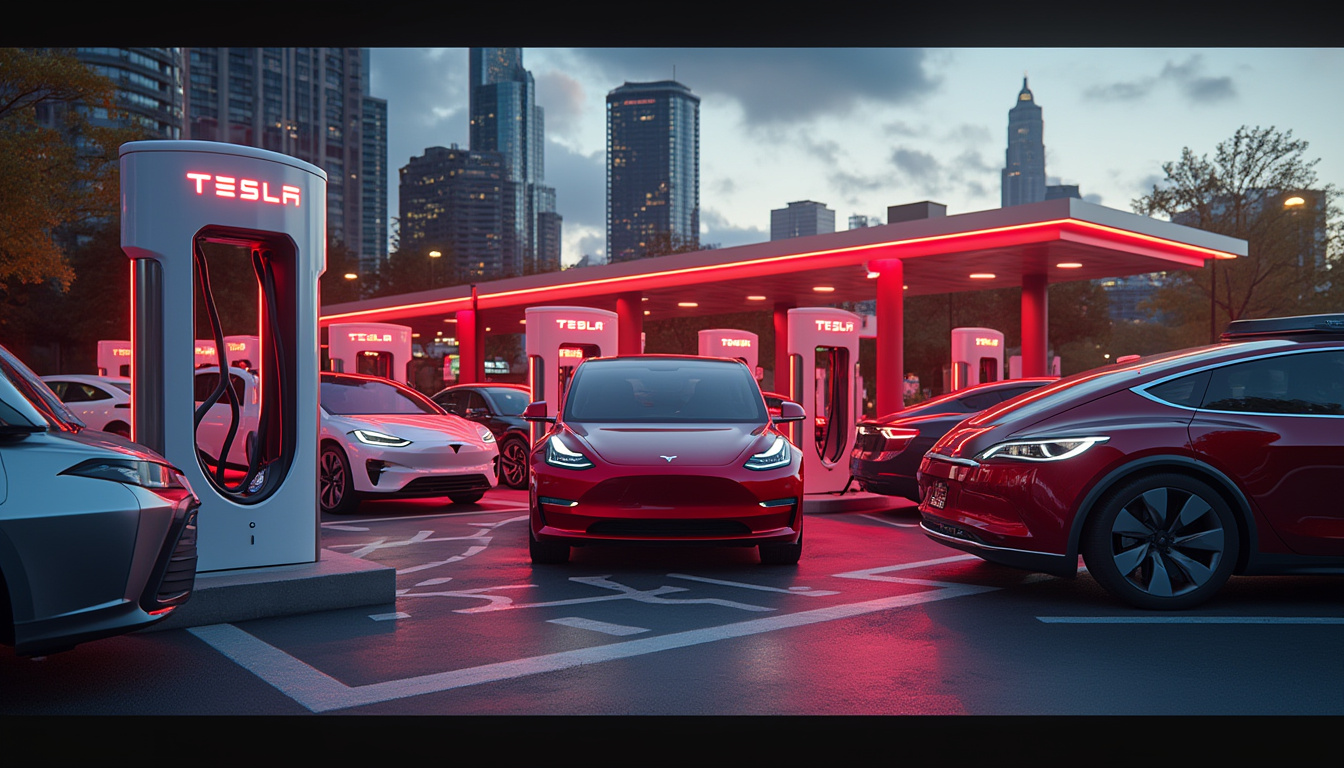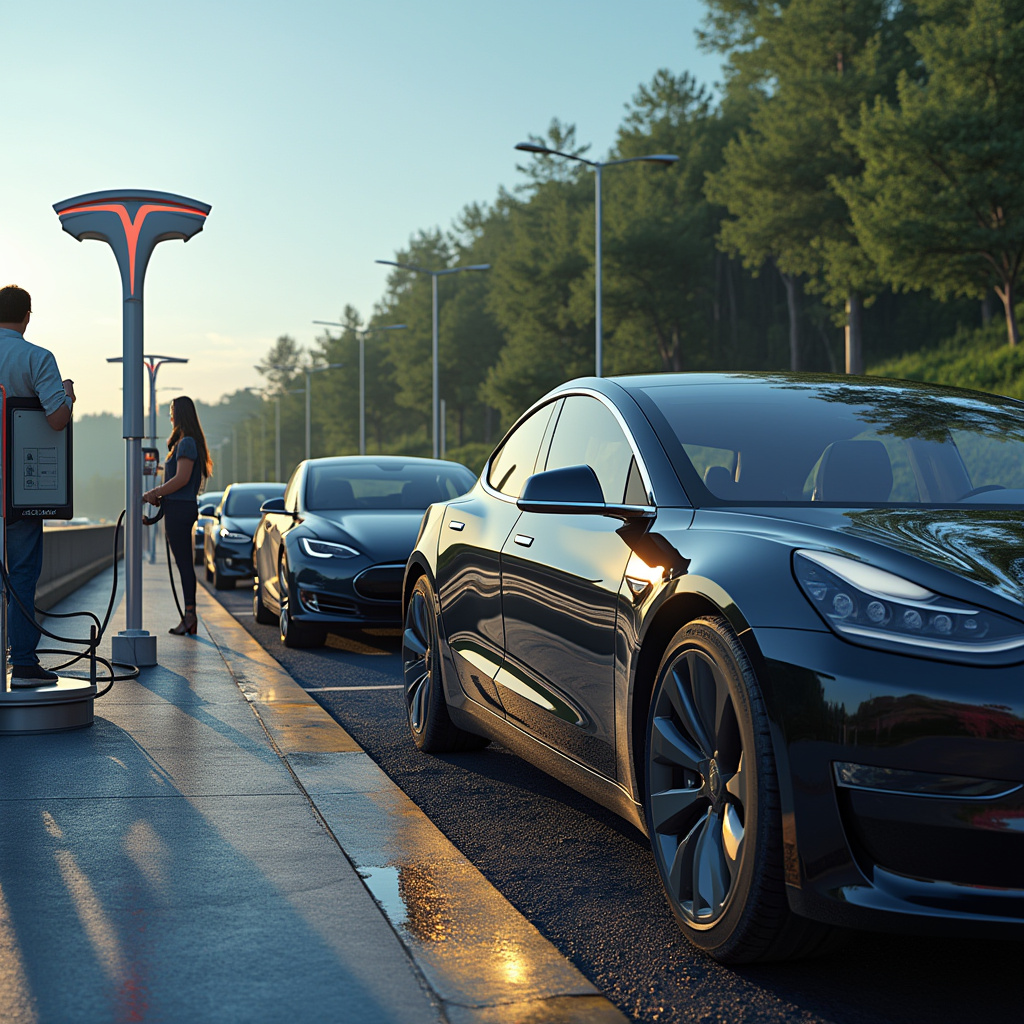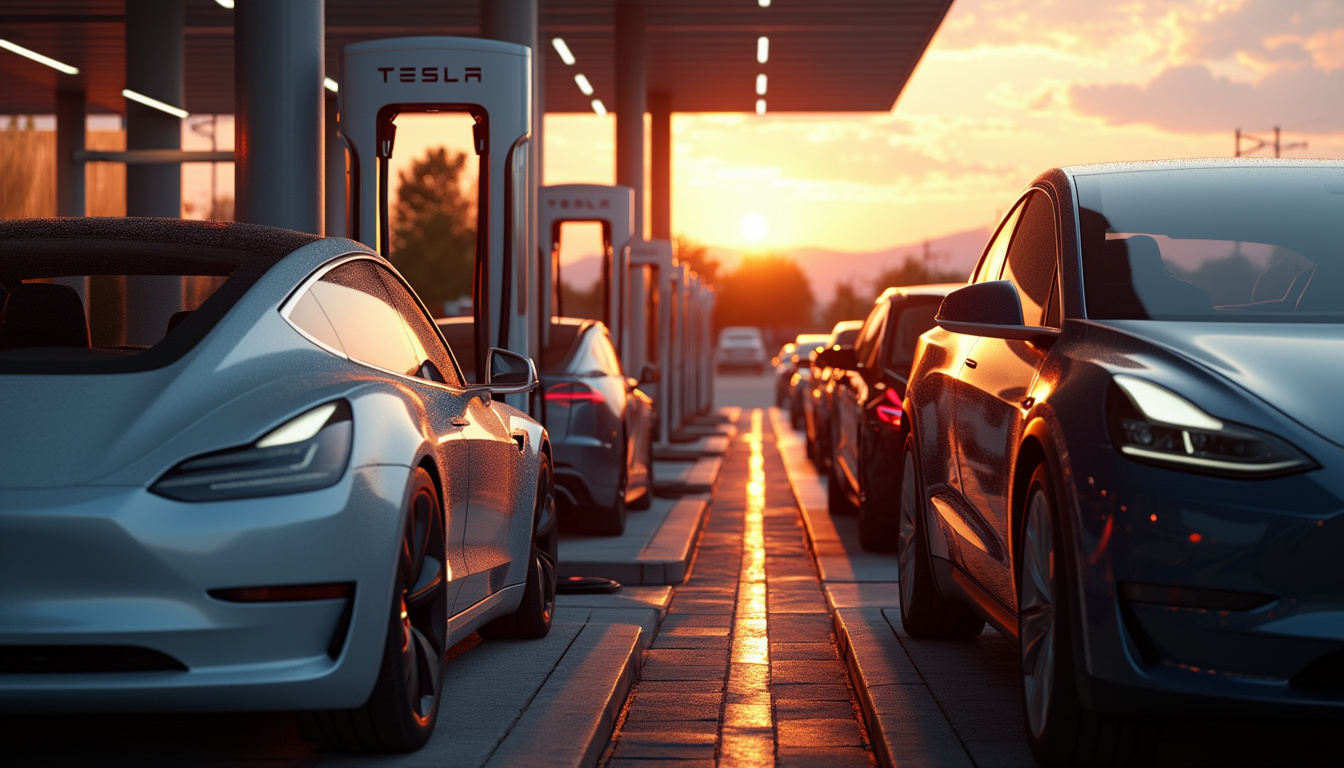

“`html
Tesla, a pioneer in EV innovation, has been a major catalyst for this change. Its Supercharger network, once exclusive to Tesla vehicles, is now opening up to other EVs. This expansion began in 2022 when Tesla allowed non-Tesla vehicles to access its Superchargers in Europe. By February 2023, the White House announced that Tesla would make at least 7,500 of its Superchargers available to non-Tesla EVs by the end of 2024.
This move is part of a broader industry trend. Major automakers, including Ford, GM, Rivian, Volvo, Polestar, and Mercedes-Benz, have committed to adopting NACS in their vehicles. This shift is expected to provide EV owners with seamless access to Tesla’s vast Supercharger network, which boasts over 17,000 fast chargers across North America.
However, the transition to NACS is not without its challenges. Many existing EVs require adapters to use NACS chargers, leading to reports of adapter shortages and delays in software integration. In response, Tesla has ramped up production of NACS adapters to address these issues.
The U.S. government is also playing a pivotal role in expanding EV charging infrastructure. The Biden administration has set an ambitious goal of deploying 500,000 public chargers nationwide by 2030. To support this effort, the National Electric Vehicle Infrastructure (NEVI) program is allocating $5 billion to states for EV charging infrastructure along highway corridors.
As of 2024, the U.S. has over 192,000 publicly available charging ports, with approximately 1,000 new public chargers being added each week. The number of charging stations has more than doubled since 2020, with over 61,000 publicly accessible stations now featuring Level 2 or DC Fast chargers as of February 2024.
Despite this progress, challenges remain. The distribution of charging stations is uneven, with some regions lagging behind in infrastructure development. Additionally, issues related to reliability and standardization across different charging networks persist, highlighting the need for continued innovation and collaboration.
As the EV charging landscape continues to evolve, efforts to improve accessibility, reliability, and convenience for EV owners remain a top priority. With ongoing developments in technology and infrastructure, the U.S. is inching closer to a future where EV charging is as seamless as filling up at a gas station.
For more detailed insights and updates on the latest developments in EV charging, visit The Verge.

Despite the promise of NACS, the industry faces notable challenges. Many existing EV models require adapters to utilize NACS chargers, leading to reports of adapter shortages and delays in software integration. In response, Tesla has increased production of NACS adapters to mitigate these issues and ensure a smoother transition for EV owners.
The U.S. government’s role in this transformation is equally significant. The National Electric Vehicle Infrastructure (NEVI) program is allocating $5 billion to states for EV charging infrastructure along highway corridors, supporting the Biden administration’s goal of deploying 500,000 public chargers by 2030. This initiative is crucial for building a comprehensive and accessible charging network nationwide.
As of 2024, the U.S. boasts over 192,000 publicly available charging ports, with approximately 1,000 new public chargers added each week. The number of charging stations has more than doubled since 2020, reaching over 61,000 publicly accessible stations equipped with Level 2 or DC Fast chargers as of February 2024. This rapid expansion underscores the growing adoption of EVs and the push for a more sustainable transportation future.
However, the EV charging landscape still grapples with uneven distribution of charging stations, with certain regions lagging behind in infrastructure development. Additionally, challenges related to reliability and standardization across different charging networks persist, emphasizing the need for continued innovation and collaboration among industry stakeholders.

Conclusion
The transition to the North American Charging Standard (NACS) represents a significant milestone in the evolution of electric vehicle (EV) charging in the United States. With major automakers like Ford, GM, Rivian, Volvo, Polestar, and Mercedes-Benz adopting NACS, EV owners will gain seamless access to Tesla’s expansive Supercharger network. This shift, combined with government initiatives like the NEVI program, is driving the deployment of 500,000 public chargers by 2030. As of 2024, the U.S. boasts over 192,000 publicly available charging ports, with approximately 1,000 new public chargers added each week. While challenges like adapter shortages and uneven infrastructure distribution persist, the collective efforts of industry stakeholders and policymakers are paving the way for a future where EV charging is as convenient as refueling a traditional vehicle.
Frequently Asked Questions
- What is the North American Charging Standard (NACS)?
- NACS, previously known as the Combined Charging System (CCS, is a standardized charging plug that allows electric vehicles to charge at a wide range of stations, including Tesla’s Supercharger network.
- Can non-Tesla vehicles use Tesla Superchargers?
- Yes, as of 2023, Tesla has opened up its Supercharger network to non-Tesla vehicles, starting with a pilot program in Europe and expanding to the U.S. By the end of 2024, at least 7,500 Superchargers will be accessible to all EVs.
- How many public EV charging stations are there in the U.S.?
- As of February 2024, there are over 61,000 publicly accessible charging stations in the U.S., featuring Level 2 or DC Fast chargers.
- What is the goal of the National Electric Vehicle Infrastructure (NEVI) program?
- The NEVI program aims to deploy 500,000 public EV chargers nationwide by 2030, with $5 billion allocated to states for charging infrastructure along highway corridors.
- What challenges does the EV charging industry still face?
- Key challenges include uneven distribution of charging stations across regions, adapter shortages for NACS compatibility, and standardization issues across different charging networks.

 Latest Breakthroughs and Updates on EV Charging Across the US
Latest Breakthroughs and Updates on EV Charging Across the US
0 Comment